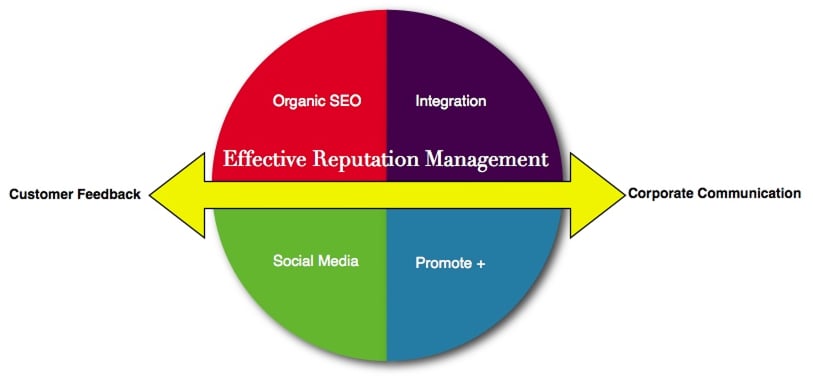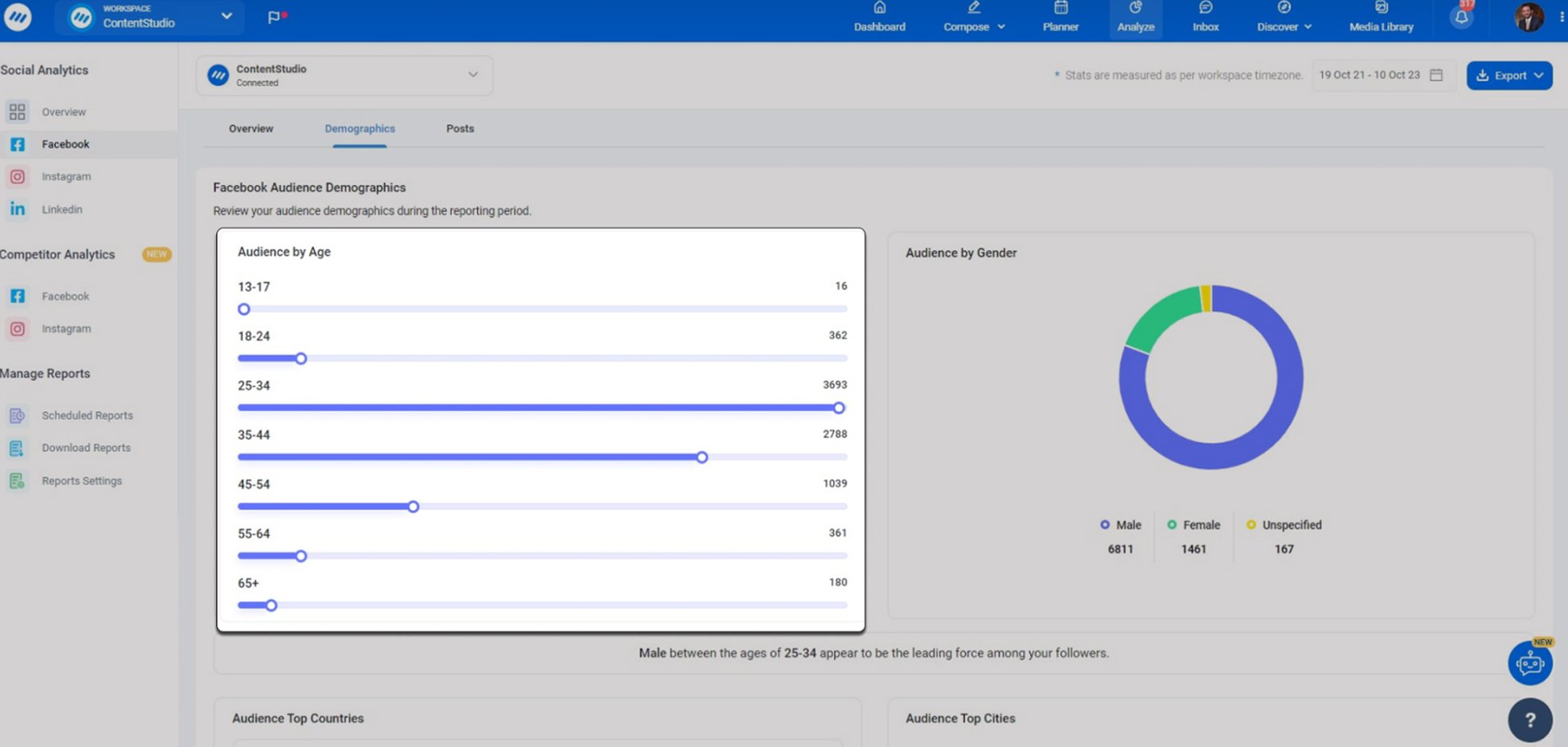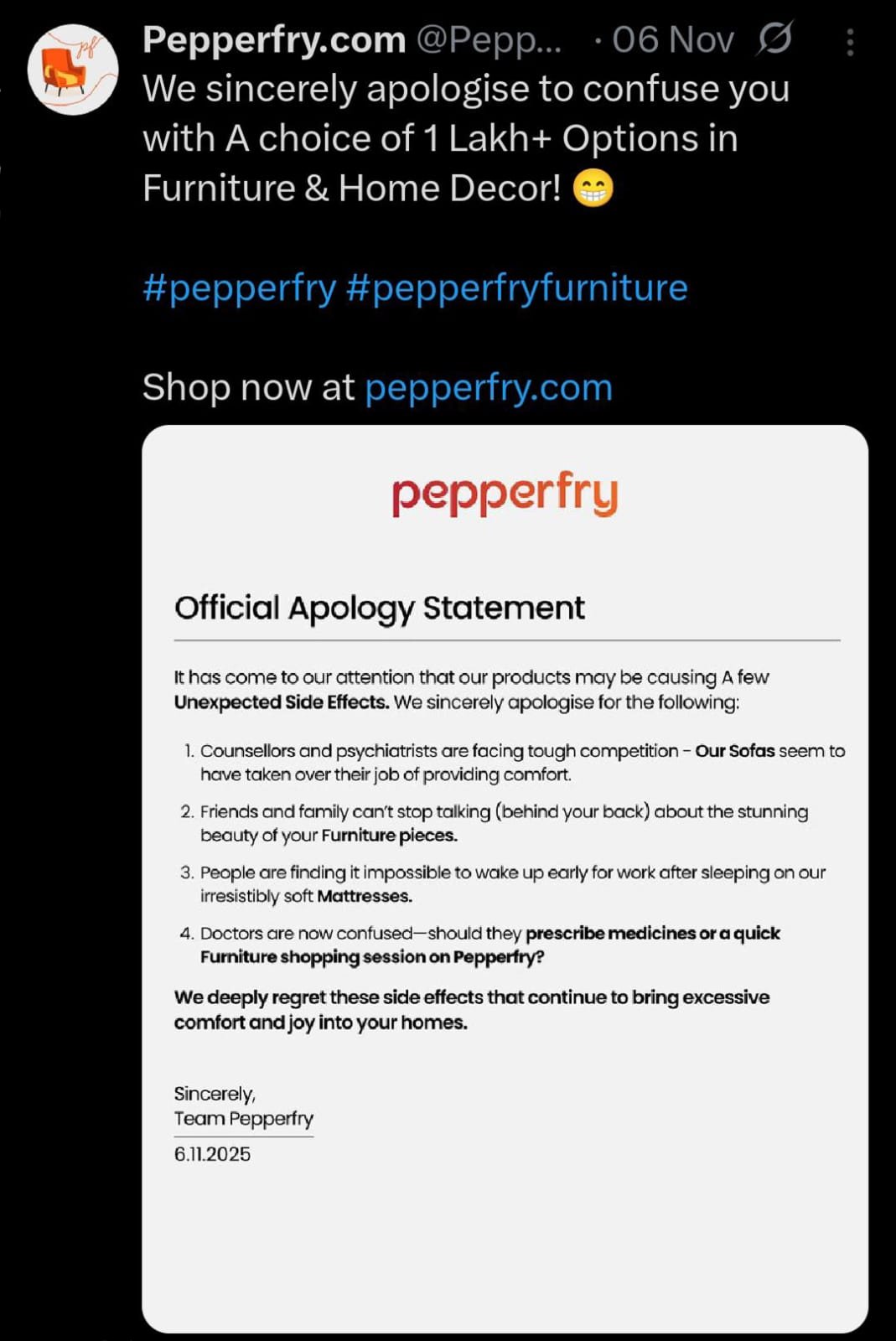AI video generation is now live - with all the premium models. Start creating
Reputation management strategy in 2026: What every business needs to know

When one bad review can cost you customers, and one viral complaint can tank your entire brand reputation and business, having a reputation management strategy becomes everything. This is why you should never ignore what people are saying about you online.
But the key thing to remember is that a comprehensive reputation management strategy is much more than just damage control. It’s about building trust before problems even start. A solid online reputation management strategy helps you stay ahead, respond fast, and protect what you’ve worked hard to build.
Nowadays, customers research everything before they buy. They check reviews, scroll through social media, and search your name on Google, which means what the customers see shapes their decision. So, let’s explore what reputation management really means and how to build a strategy that works.
What is reputation management?
Reputation management is how you control what people see and think about your business online. It’s the process of monitoring, influencing, and improving how your brand appears across search engines, review sites, social media, and news platforms.

Think of it this way: every mention, review, comment, or article about your business adds up to form your online reputation. Reputation management means actively shaping that image instead of leaving it to chance.
It involves tracking what’s being said about you, responding to feedback (good and bad), promoting positive content, and fixing issues before they spiral. Some businesses handle this in-house. Others hire agencies or use software tools to stay on top of it.
Online reputation management
Online reputation management specifically focuses on your digital presence, including Google results, Yelp reviews, social media mentions, blog posts, and more. It’s not about hiding the truth or faking reviews. It’s about being present, honest, and proactive in the conversations happening about your brand.
The goal is simple: when someone searches for your business, they should find accurate, positive, and trustworthy information.
What is a reputation management strategy?
A reputation management strategy is your plan to protect and improve how people perceive your business. It’s a structured plan to be proactive in handling your reputation, instead of being reactive.
An effective reputation management strategy is essential to ensure you don’t just wait for a crisis and scramble to respond. You set up systems, create content, and monitor feedback consistently.
This strategy outlines what you’ll do to build a positive reputation, how you’ll handle negative situations, and who’s responsible for each task. It includes everything from SEO tactics to social media management to customer service protocols.
Here’s what a good strategy covers:
- Monitoring your brand mentions across all platforms
- Publishing content that highlights your strengths
- Responding to reviews and comments quickly,
- Managing search engine results so that positive content ranks higher
- Having a crisis plan ready if something goes wrong.
Without a strategy, you’re just reacting. With one, you’re in control. You can shape the narrative, build credibility, and turn satisfied customers into advocates. It’s the difference between hoping things go well and making sure they do.
Why a reputation management strategy is essential in 2026
The digital world is always evolving, so businesses also have to change the way they build and maintain trust. The traditional word-of-mouth has turned into online reviews. It now happens in public and at scale.

A single interaction, whether good or bad, can reach thousands of people instantly. In other words, your reputation is not just important anymore but the foundation of your business survival.
Here’s why you can’t ignore it.
Customers trust online reviews
About 91% of customers trust online reviews as much as personal recommendations. Many people don’t just glance at reviews anymore, but they study them. Before buying anything or hiring anyone, they check Google, Yelp, Trustpilot, and social media.
A few bad reviews can make them choose your competitor instead. If you’re not managing those reviews, you’re losing business.
Also read: How to turn honest user reviews into high-converting content
Reputation impacts finances
A strong reputation brings in more customers. A weak one drives them away. Studies show that businesses with higher ratings get more clicks, calls, and sales. Even a one-star drop in your average rating can hurt revenue. Managing your reputation isn’t optional—it’s tied to your profit.
Negative content spreads faster than positive content
One angry customer with a smartphone can post a complaint that reaches thousands of people in minutes. If you’re not monitoring and responding, that negativity sits there unchallenged. A reputation management strategy helps you catch issues early and respond before they escalate.
Search engines shape first impressions
When someone searches your business name, what shows up on page one of Google? If it’s outdated, negative, or irrelevant, you’ve already lost their trust. A reputation management strategy includes SEO work to push positive, accurate content to the top of search results. First impressions happen online now, and you need to control them.

How to develop a reputation management strategy?
Now that you know all about the basics and importance of a reputation management strategy, let’s discuss the 10 steps you need to follow to have an effective strategy:
Define your reputation goals
Start by deciding what you want people to think about your business. Consider questions like:
- Do you want to be known for great customer service? Fast delivery? Innovation? Quality products?
Get specific. Vague goals lead to vague results.

Write down what a good reputation looks like for your business. Maybe it’s maintaining a 4.5-star average on Google. Maybe it’s appearing in the top three search results for your industry. Maybe it’s reducing negative mentions by half. Whatever it is, define business objectives clearly so you know what you’re working toward.
Audit your current online reputation
Before you fix anything, you need to know where you stand. You should:
- Search your business name on Google and see what comes up.
- Check review sites like Yelp, Google Reviews, and Trustpilot.
- Look at social media mentions on Twitter, Facebook, and LinkedIn.
- Read through the comments on your posts.

Make a list of the good, the bad, and the outdated. Consider factors like, are there old complaints you never addressed? Positive reviews you never thanked customers for? Inaccurate information on third-party sites?
This audit shows you what needs attention and where to start.
Identify key reputation channels
Not every platform matters equally for your business.
A B2B company might care more about LinkedIn and industry blogs. A restaurant needs to focus on Google Reviews and Yelp. A retail brand should prioritize Instagram and Facebook.
Figure out where your customers are talking about you and where potential customers are searching for information. Those are your key channels. Focus your energy there instead of trying to be everywhere at once.
Build a positive content strategy
You can’t just delete bad content, but you have to drown it out with good content. The following are the key ways to build an effective content strategy:
- Create blog posts, case studies, customer testimonials, and press releases that highlight your strengths.
- Publish consistently so fresh, positive information keeps showing up in search results.
- Share stories about your team, your values, and your impact.
- Post customer success stories.
- Write helpful guides related to your industry.

The more quality content you put out, the harder it is for negative content to dominate your online presence.
Social Media Content Calendar
Stay consistent and organized with Contentstudio’s social media content calendar for marketers and agencies.
Get Started for FREE
Respond to feedback the right way
Every review and comment is a chance to show who you are. Thank customers for positive reviews. Acknowledge negative ones quickly and professionally. Don’t argue or get defensive, and always apologize if you messed up, explain what happened, and offer to fix it.

Responding shows you care. It also shows potential customers that you’re engaged and accountable. Even a simple “Thanks for your feedback, we’re looking into this” can turn a bad situation into a neutral one.
Develop a crisis management plan
Crises happen. A product fails. An employee says something offensive. A customer goes viral with a complaint. You need a plan before it happens, not during.

Decide who’s in charge when a crisis hits. Write down the steps you’ll take: assess the situation, draft a response, decide where to post it, and monitor reactions. Have templates ready for common issues so you’re not writing from scratch under pressure. Speed matters in a crisis, and a plan helps you move fast without making things worse.
Rely on SEO for reputation control
Search engine optimization isn’t just for marketing, but it’s a powerful reputation tool. When you optimize your website, blog, and social profiles with the right keywords, you push them higher in search results. That means positive, accurate content appears before anything negative.
Monitor and measure your progress

Set up alerts so you know when someone mentions your business online. Use tools like Google Alerts to track keywords and brand mentions. Check your review sites weekly and watch your search rankings.
Measure what’s working by considering:
- Are your review ratings improving?
- Is positive content ranking higher?
- Are you responding faster to complaints?
Track these metrics so you can adjust your strategy as needed.
Encourage employee and customer advocacy
Your best advocates are the people who already know and like you. Encourage happy customers to leave reviews. Make it easy by sending them a direct link after a purchase or service. Train your employees to represent your brand well online and offline.

When employees post positive things about working for you, it adds credibility. When customers share their experiences, it builds trust. Advocacy amplifies your reputation in ways paid ads never can.
Also read: User-generated content (UGC): How to share & why it matters?
Maintain consistency and transparency
Don’t promise one thing and deliver another. If you say you respond to reviews within 24 hours, do it. If you claim to prioritize customer service, prove it. Consistency builds trust, while inconsistency destroys it.
How to execute a reputation management strategy?
Creating a reputation management strategy and its actual execution are two different things.
If you have followed the steps and strategies discussed in the previous section, you’ll have a comprehensive plan for online reputation management. Now, let’s see how you can turn that plan into actual action:
Assign roles and responsibilities
Someone needs to own the process of managing your reputation. So, you need to decide:
- who monitors reviews
- who responds to comments
- who publishes content
- who handles crises.
If you’re a small business, it might all be you. If you are running a larger organization, divide tasks among your team.

Make it clear who does what and when. Without accountability, things slip through the cracks. A customer complaint sits unanswered. A negative article stays at the top of Google. Assign the work and check in regularly.
Also read: How to build an accomplished social media team for your agency?
Set up monitoring systems
You should use tools to automate tracking. Google Alerts is free and tells you when your business name appears online. Review management platforms like Birdeye or Podium pull all your reviews into one dashboard.

Set up alerts for your business name, key employees, and common misspellings. Check them daily. The faster you know about a mention, the faster you can respond.
Also read: 17 best social listening tools in 2025 (free & paid)
Create and publish positive content consistently
Don’t wait until you need it. Publish blog posts, press releases, and case studies regularly. Share customer testimonials. Post updates on social media. The more positive content you create, the more control you have over what people find.

Consistency matters more than volume. One post a week is better than ten posts in one week and then nothing for a month. Build a content calendar and stick to it.
Also read: Create a winning social media content calendar in 2025
Engage proactively with your audience
Don’t just respond when someone complains. You need to be proactive, so:
- Comment on posts.
- Answer questions.
- Join conversations in your industry.
- Show up where your customers are and add value.

Proactive engagement builds relationships before problems happen. When people know you’re accessible and helpful, they’re more likely to reach out privately instead of posting a public complaint.
Implement SEO and content optimization
Optimize every piece of content you publish. Use your target keywords naturally in blog posts, website pages, and social profiles. Build backlinks by guest posting on reputable sites. Keep your Google Business Profile updated with photos, hours, and accurate information.
SEO takes time, but it works. When you rank higher for your brand name and relevant keywords, you control the narrative. Negative content gets pushed down, and positive content stays visible.
Conclusion
Your reputation isn’t something that just happens, but it is something you build. Nowadays, a large majority of customers make decisions based on what they find online. If you’re not managing that information, you’re leaving your business vulnerable.
A reputation management strategy gives you control. It helps you respond faster, rank higher, and build trust before problems start. You don’t need a huge budget or a fancy agency to get started. You just need a plan and the discipline to follow through.
Start with the basics: monitor what people are saying, respond to feedback, create and publish content on social media, and stay consistent.
Remember that the businesses that win aren’t the ones with perfect reputations, but the ones that manage their online reputations successfully.
FAQs
What is the process of reputation management?
Reputation management involves monitoring online mentions, responding to reviews and feedback, publishing positive content, optimizing search results, and addressing issues before they escalate. It’s an ongoing process, not a one-time fix.
How long does it take to repair a damaged reputation?
It depends on the damage. Minor issues can improve in weeks with consistent effort. Serious problems might take months or even a year. The key is acting fast, being transparent, and consistently publishing positive content to push negative results down.
Which tools are best for online reputation monitoring?
Google Alerts is free and useful for basic tracking. Tools like Mention offer advanced brand listening, while ContentStudio can help you in social media management. Overall, all these features combine together to
Can SEO really improve online reputation?
Yes. SEO helps you control what shows up when someone searches your business name. By optimizing positive content and building backlinks, you can push that content higher in search results and bury negative or outdated information further down.
Should small businesses invest in professional reputation management?
It depends on your situation. If you’re overwhelmed, facing a crisis, or lack the time to manage it yourself, hiring help makes sense. But many small businesses can handle reputation management in-house with the right tools and a consistent strategy. Start with the basics and scale up if needed.
Recommended for you

Reputation management strategy in 2026: What every business needs to know


Powerful social media management software
14-day free trial - No credit card required.


